South Caicos is a small island in the Turks and Caicos archipelago, known for its stunning beaches and crystal-clear waters. It is also home to diverse bird species that inhabit its lush forests, mangrove swamps, and coastal wetlands.
These avian inhabitants have adapted to the island’s unique environment and play a critical role in the island’s biodiversity.
Whether you’re an avid birdwatcher or a nature enthusiast, exploring the various bird species on South Caicos is a must-do activity that will leave you in awe of the island’s natural wonders.
We will delve deeper into the world of birds in South Caicos and the significance of their presence on the island.
24 South Caicos Birds You Should Know
South Caicos, part of the Turks and Caicos Islands in the Caribbean, boasts a diverse range of bird species due to its unique habitat.
Here are 24 birds you should know from South Caicos:
1. American Wigeon
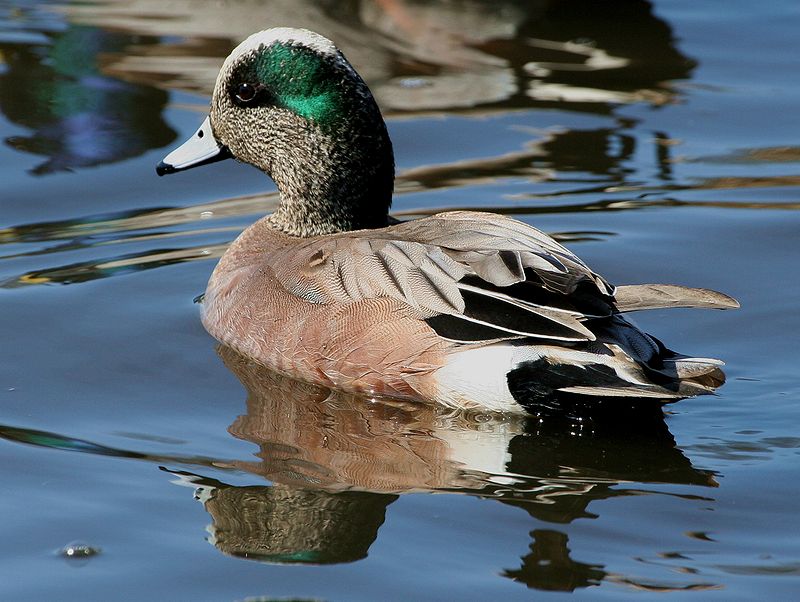
The American Wigeon, also known as the Baldpate, is a species of dabbling duck found throughout North America.
It closely resembles its Eurasian counterpart and was formally described in 1789 by German naturalist Johann Friedrich Gmelin.
This medium-sized bird has an overall grey body with white feathers on its face and belly, giving it a distinctive bald appearance.
Its wings are brownish black with green speculum markings, while the tail is dark brown or black at the base and gradually lightens near the tips to become chestnut-colored.
The male wigeons have purple patches on their heads during the breeding season and yellow eyes, which helps differentiate them from females, who have duller colors around their faces instead of bright ones like males.
Scientific classification:
| Kingdom | Animalia |
| Phylum | Chordata |
| Class | Aves |
| Order | Anseriformes |
| Family | Anatidae |
| Genus | Mareca |
| Species | M. americana |
Also Featured In: Most Popular Bird Species in North America, British Columbian Birds
2. Mallard
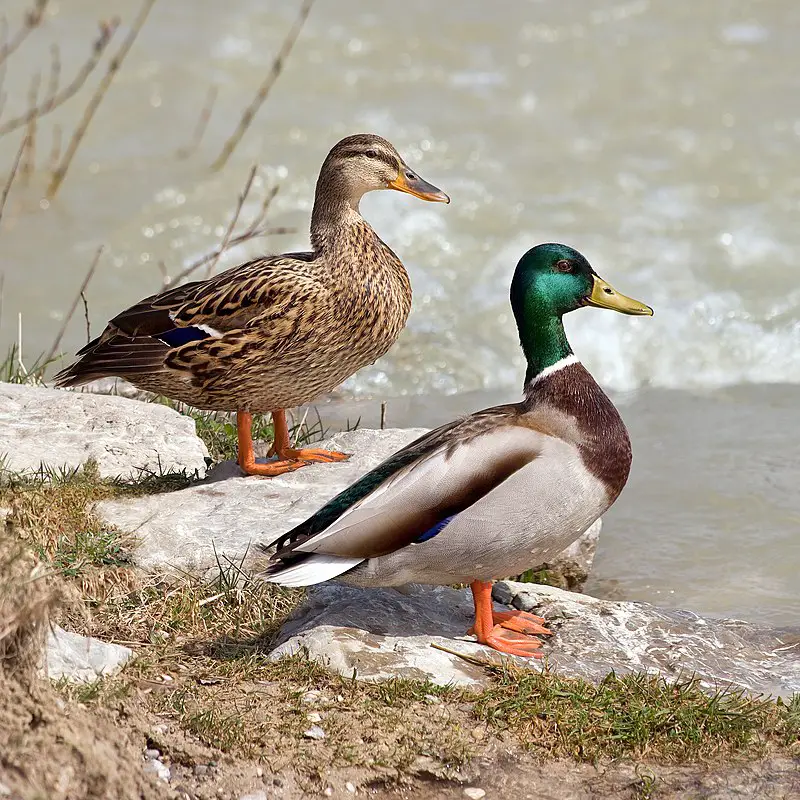
The Mallard is a species of dabbling duck that can be found living in temperate and subtropical regions across the Americas, Eurasia, and North Africa.
Humans have introduced it to other areas, such as New Zealand, Australia, Peru, Brazil, and South Africa.
This beautiful bird belongs to the Anatinae subfamily of waterfowl family Anatidae. The adult mallards have glossy green heads with white neck rings surrounding them.
Its brownish-grey body feathers make it look stunning when it flies away or sits in its natural habitat around lakes or ponds.
They are excellent swimmers, too, due to webbed feet, which help them swim fast underwater while looking for food like aquatic insects, etc. Their loud quacking sound makes them quite popular among nature lovers.
Scientific classification:
| Kingdom | Animalia |
| Phylum | Chordata |
| Class | Aves |
| Order | Anseriformes |
| Family | Anatidae |
| Genus | Anas |
| Species | A. platyrhynchos |
Also Featured In: Common Birds in the Cities, Most Common Lake Birds
3. Osprey
The Osprey is a majestic bird of prey with an incredibly wide habitat range. It has distinctive brown upperparts, greyish head, and underparts, making it easily identifiable in the skies above many regions worldwide.
With a wingspan of up to 180cm (71in) and a body length reaching 60cm (24in), this large raptor specializes in hunting for fish, soaring high over rivers and coasts, and searching for its next meal.
Despite living near water sources, they can also be found inhabiting mountainsides or even woodlands, proving their incredible adaptability. It is an impressive species that truly deserves admiration.
Scientific classification:
| Kingdom | Animalia |
| Phylum | Chordata |
| Class | Aves |
| Order | Accipitriformes |
| Family | Pandionidae |
| Genus | Pandion |
| Species | P. haliaetus |
Also Featured In: Ukrainian Birds You Should Know, Birds of Sweden
4. Sanderling
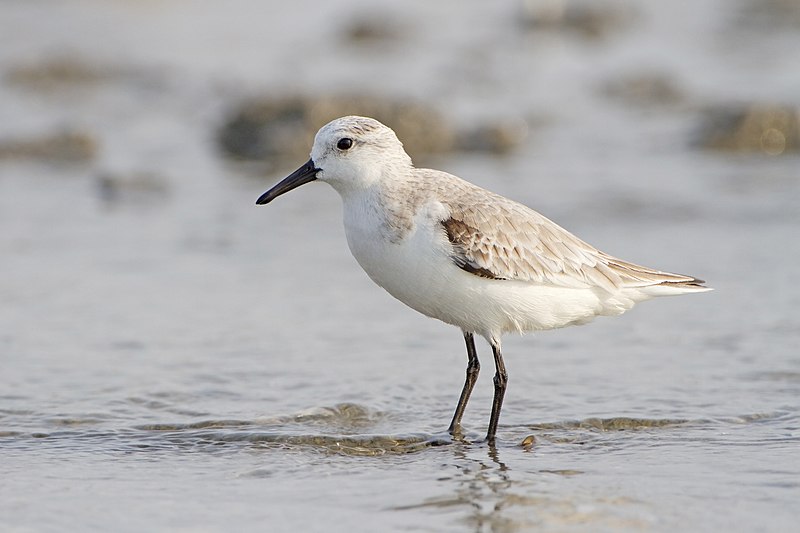
The Sanderling is a small wading bird found in the Arctic region. Its name comes from Old English, meaning “sand-ploughman”. It has grey feathers and light legs, giving it its distinct white coloration.
During summer breeding, they travel great distances – some wintering as far south as South America or Southern Africa. They typically feed on crustaceans such as shrimp and mollusks along coastal shores.
The Sanderling is an important species to watch out for because of its long migratory patterns and sensitivity to environmental change; if there’s trouble with this species, then other birds may also be affected.
Scientific classification:
| Kingdom | Animalia |
| Phylum | Chordata |
| Class | Aves |
| Order | Charadriiformes |
| Family | Scolopacidae |
| Genus | Calidris |
| Species | C. alba |
Also Featured In: Top Birds Found in Mexico, Galapagos Birds You Should Know
5. Magnificent Frigatebird
The Magnificent Frigatebird is the largest frigatebird species, measuring between 89 and 114 cm in length and having a 7-8 ft wingspan.
It can be found over tropical waters off America from northern Mexico to Peru on the Pacific coast and in Florida down south.
Its diet consists mainly of fish they take from other seabirds or snatch directly from the ocean surface while flying low above it.
They also feed on crustaceans and squid when available.
This impressive bird has an unmistakable silhouette with its long pointed wings, forked tail feathers and male’s red gular pouch which inflates during courtship displays.
Scientific classification:
| Kingdom | Animalia |
| Phylum | Chordata |
| Class | Aves |
| Order | Suliformes |
| Family | Fregatidae |
| Genus | Fregata |
| Species | F. magnificens |
Also Featured In: Birds that Live in the Ocean , Most Common Birds in South America Birds
6. Eurasian Collared Dove
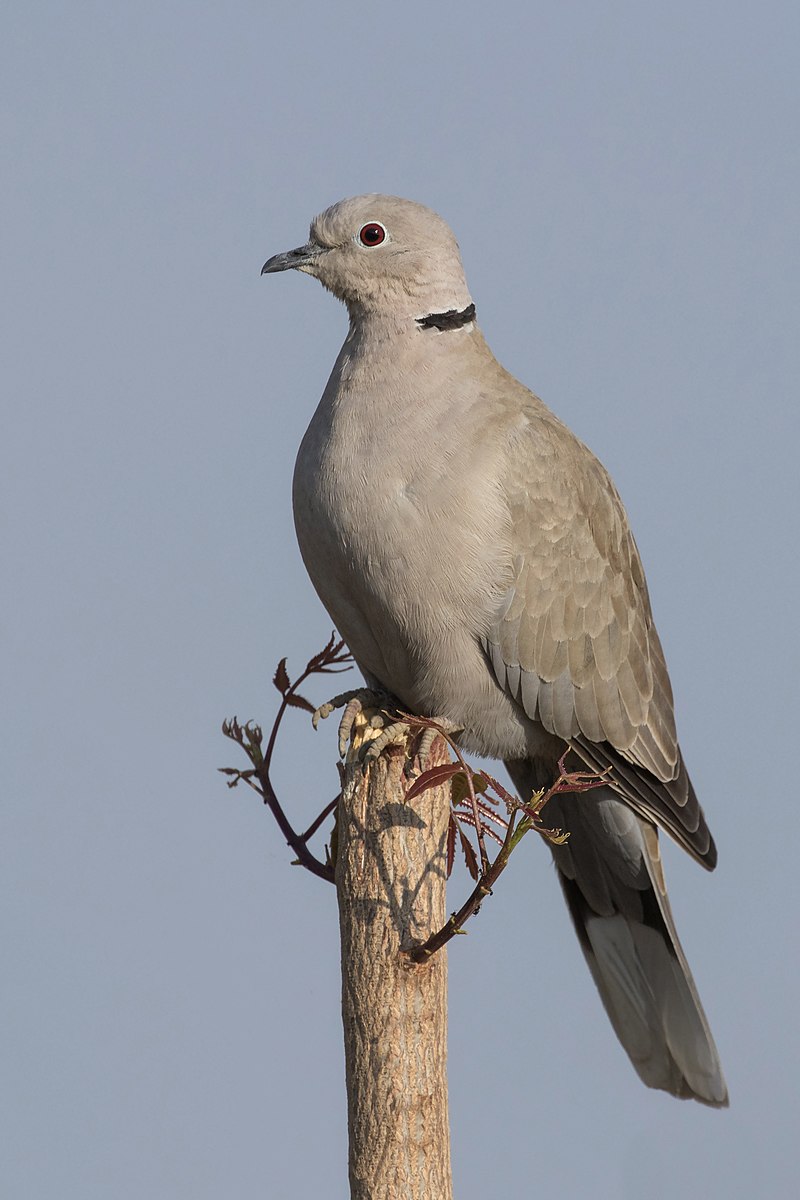
The Eurasian collared dove is a species of bird native to Europe and Asia, with its range expanding through introduction in Japan, North America, and islands in the Caribbean.
It has become so widespread that it is listed as Least Concern on the IUCN Red List. The scientific name for this bird was proposed by Hungarian naturalist Imre Frivaldsz – Columba decaocto.
This beautiful creature typically measures between 33-37 cm from tip to tail feathers, displaying an overall greyish brown plumage; they also have a distinctive black half collar around their neck, which gives them their common name.
These birds are mainly found inhabiting open woodlands or agricultural lands near human settlements where there’s plenty of food available, such as grain fields or gardens where fruits can be eaten off trees.
With a vast global population trend increasing yearly, these birds greatly add to many backyards worldwide.
Scientific classification:
| Kingdom | Animalia |
| Phylum | Chordata |
| Class | Aves |
| Order | Columbiformes |
| Family | Columbidae |
| Genus | Streptopelia |
| Species | S. decaocto |
Also Featured In: Birds That Live in Colorado, Most Common Romanian Birds
7. Cattle Egret
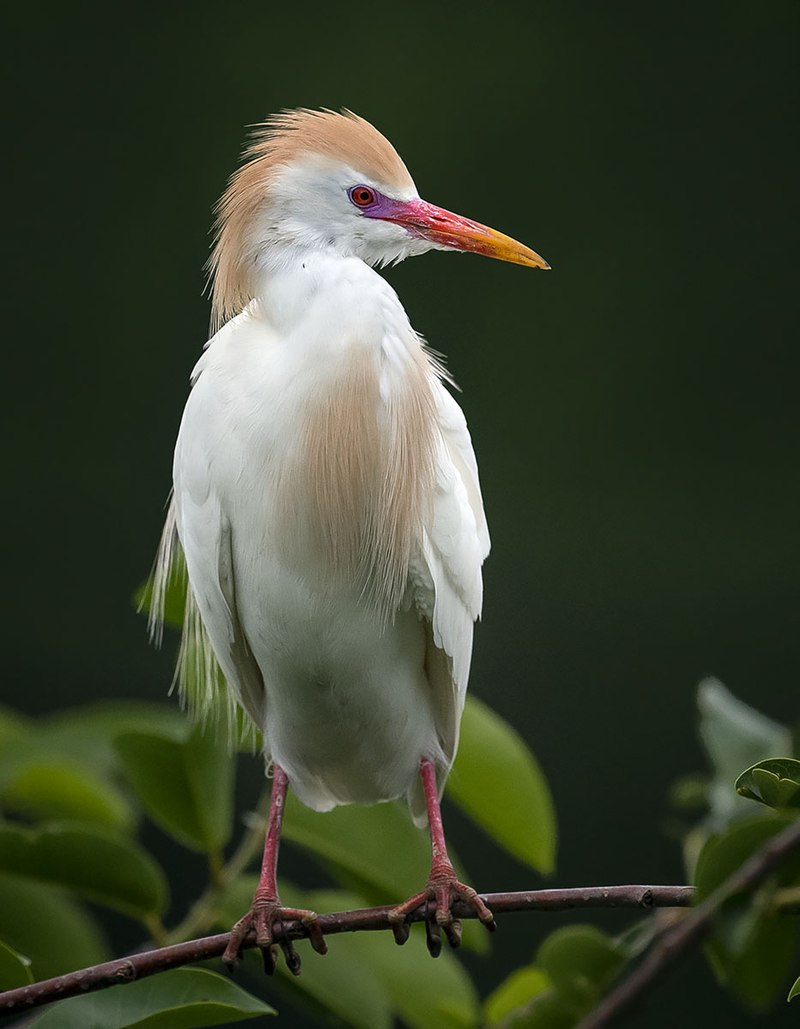
The Cattle Egret is a heron of the family Ardeidae found worldwide in tropical, subtropical, and warm temperate areas. It has two subspecies: western cattle egret and eastern cattle egret.
They have white plumage with buff plumes on their head, neck, and back. The beak is yellowish-orange with a black tip, while the legs are orange or yellow colored depending on species variation.
This bird usually feeds near large herds of animals, such as cows, horses, etc., where it finds plenty of insects, like grasshoppers, crickets, etc.
Its presence benefits these animals by removing ectoparasites from them, which leads to a healthier livestock population.
It nests colonially in trees or shrubs located close to water bodies during breeding season which generally takes place between March-June every year.
Scientific classification:
| Kingdom | Animalia |
| Phylum | Chordata |
| Class | Aves |
| Order | Pelecaniformes |
| Family | Ardeidae |
| Genus | Bubulcus Bonaparte, 1855 |
| Species | B. ibis |
Also Featured In: Egyptian Birds, Asian Birds
8. Great Egret

The Great Egret is a large, white bird found in many regions of the world. It has four subspecies reside across Asia, Africa, the Americas, and southern Europe.
This species usually lives near bodies of water such as lakes and marshes. They are also spreading into more northern areas of Europe due to climate change.
These birds have long yellow legs with an impressive wingspan, allowing them to soar majestically through the sky, hunting for fish or amphibians in shallow waters below.
Their feathers have been used historically by Native Americans as part of traditional garments or ceremonies. Still, this practice should be avoided today so these amazing creatures can thrive without harm from humans.
Scientific classification:
| Kingdom | Animalia |
| Phylum | Chordata |
| Class | Aves |
| Order | Pelecaniformes |
| Family | Ardeidae |
| Genus | Ardea |
| Species | A. alba |
Also Featured In: Most common Birds in France, Birds Live in Arkansas
9. American Flamingo
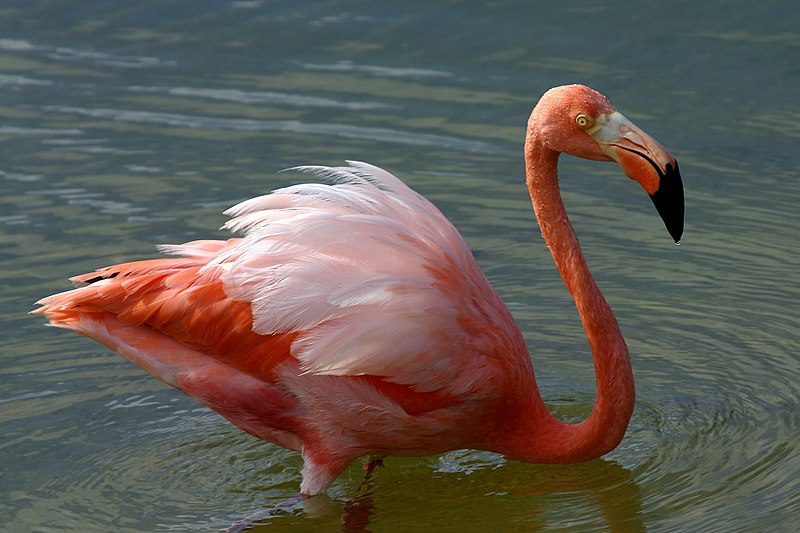
The American flamingo is a large species of bird found in the Neotropics. It has bright pink feathers and long legs, making it easily distinguishable from other species of flamingos.
The diet consists mostly of shrimp and small fish, but they are also known to eat algae, aquatic insects, mollusks, crustaceans, and seeds.
They live around coastal lagoons or salt ponds in colonies with thousands of birds nesting together on mud flats.
Flamingos build nests out of sticks that sit atop their feet as they wade through shallow waters, looking for food during low tide periods when these areas become more accessible for feeding.
These birds have an interesting courtship ritual involving neck stretching, which looks like a dance to attract mates before the breeding season begins in May-June each year, leading to chicks hatching during the July-August period
Scientific classification:
| Kingdom | Animalia |
| Phylum | Chordata |
| Class | Aves |
| Order | Phoenicopteriformes |
| Family | Phoenicopteridae |
| Genus | Phoenicopterus |
| Species | P. ruber |
Also Featured In: Common Birds in Colombia, Birds You’ll Find in Zoo
10. Great Blue Heron
The Great Blue Heron is a majestic wading bird found in many parts of North America, Central America, the Caribbean, and even as far away as the Galapagos Islands.
It has an impressive wingspan which can reach up to six feet wide. Its feathers are mainly bluish-gray with brownish streaks on its neck and chest, while its head displays white plumes.
The adult herons can also be identified by their yellow bill and legs.
They live near bodies of water such as lakes, marshes, or rivers, feeding on fish using a spear-like motion with their sharp bills.
An all-white population exists only in south Florida and the Florida Keys, making it unique.
Scientific classification:
| Kingdom | Animalia |
| Phylum | Chordata |
| Class | Aves |
| Order | Pelecaniformes |
| Family | Ardeidae |
| Genus | Ardea |
| Species | A. herodias |
Also Featured In: Common Birds in Canada, Blue Birds You’ll Found around Us
11. Skuas
Skuas are a group of predatory seabirds with seven species belonging to the genus Stercorarius.
They are also known as “Jaegers” in North America, and their name originates from the Faroese word for Great Skua – skúgvur.
These birds typically inhabit coastal areas or open oceans where they feed on fish, krill, and other marine creatures.
Skuas can be distinguished by their pointed wings, which help them fly long distances while hunting food.
Their distinctive coloration varies depending on age and habitat but generally includes greyish brown upperparts and white underparts with black streaks along their belly area.
The overall size ranges from 24-40 cm, making this one of the larger seabird species.
Scientific classification:
| Kingdom | Animalia |
| Phylum | Chordata |
| Class | Aves |
| Order | Charadriiformes |
| Suborder | Lari |
| Family | Stercorariidae Gray, 1871 |
| Genus | Stercorarius Brisson, 1760 |
Also Featured In: Birds of Morocco, Italian Birds You Should Know
12. Red Knot
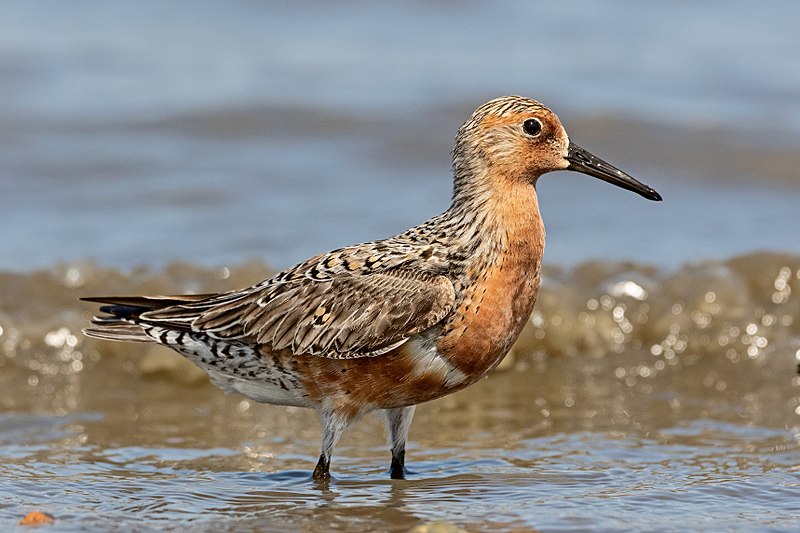
The Red Knot is a medium-sized shorebird that inhabits tundra and Arctic Cordillera in the far north of Canada, Europe, and Russia.
It belongs to the Calidris sandpipers family, one of its largest members, second only to the Great Knot.
This species has six subspecies recognized worldwide. During the breeding season, their diet consists mainly of arthropods and larvae; however, they may also feed on other items, such as mollusks or crustaceans, according to availability during migration periods.
They are known for their long migratory journeys, which can last up to 20,000 kilometers per year – from wintering grounds in South America through North American coasts until reaching summer nesting sites across Northern Eurasia.
Scientific classification:
| Kingdom | Animalia |
| Phylum | Chordata |
| Class | Aves |
| Order | Charadriiformes |
| Family | Scolopacidae |
| Genus | Calidris |
| Species | C. canutus |
Also Featured In: Birds of Netherlands, Flocks Birds around Us
13. Grey Plover
The Grey Plover is a large plover bird that breeds in the Arctic region. It then migrates long distances and can be found on coastlines worldwide when not breeding.
The species was first described by Swedish naturalist Carl Linnaeus in 1758 under its binomial name “Tringa squatarola.”
In addition to being known as grey plovers or black-bellied plovers, they are sometimes referred to as “black-breasted lapwings” due to their distinctive plumage that features white underneath with dark greys above.
These birds inhabit beaches, mudflats, and saltmarshes, where they feed mainly on small invertebrates such as worms and insects.
Scientific classification:
| Kingdom | Animalia |
| Phylum | Chordata |
| Class | Aves |
| Order | Charadriiformes |
| Family | Charadriidae |
| Genus | Pluvialis |
| Species | P. squatarola |
Also Featured In: Birds that can be Seen in Outer Banks, Tundra Birds
14. West Indian Whistling Duck
The West Indian whistling duck is a beautiful species of bird native to the Caribbean. This duck has an unmistakable call, as its name implies it can whistle.
It also has black bill and legs with grey-brown feathers that help camouflage it in its environment.
The primary breeding range of this species includes the Bahamas, Cuba, Cayman Islands, Antigua and Barbuda, Jamaica, Hispaniola, and Puerto Rico, where they live mainly in shallow freshwater wetlands such as ponds or swamps.
Besides their distinctive whistles, these birds can communicate through various other calls, including grunts, honks, and quacks.
They feed on aquatic plants but may occasionally eat small invertebrates like insects.
Despite being hunted for food by humans, these ducks remain widespread throughout their habitats due to successful conservation efforts over recent years, making them a symbol of hope for many wildlife enthusiasts worldwide today.
Scientific classification:
| Kingdom | Animalia |
| Phylum | Chordata |
| Class | Aves |
| Order | Anseriformes |
| Family | Anatidae |
| Genus | Dendrocygna |
| Species | D. arborea |
Also Featured In: Most Common Types of Birds Found in Cuba, British Virgin Islands Birds You Need to See
15. Oystercatchers
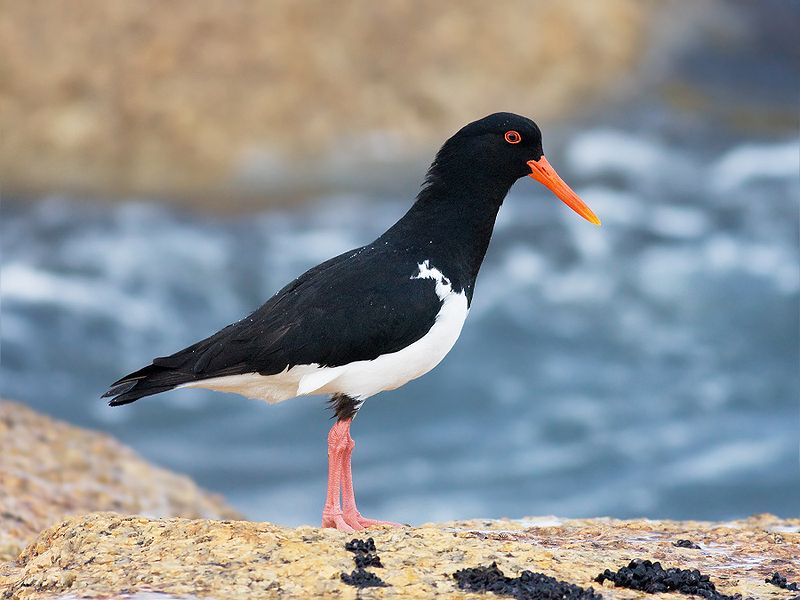
Oystercatchers are a family of waders forming the Haematopodidae, with one genus: Haematopus.
They live in coastal regions around the world, excluding both polar and some tropical areas of Africa & South East Asia.
Eurasian, South Island & Magellanic oystercatcher species also breed far inland – breeding grounds being found much deeper than other family members.
They have long beaks used to feed on mollusks such as mussels, clams, and oysters, which they crack open using their strong bills.
Oystercatchers are usually quite vocal birds, making various loud calls when disturbed or alarmed.
The males tend to display more brightly colored plumage than females, who share similar brown/black hues for camouflage purposes during nesting season.
Scientific classification:
| Kingdom | Animalia |
| Phylum | Chordata |
| Class | Aves |
| Order | Charadriiformes |
| Suborder | Charadrii |
| Family | Haematopodidae Bonaparte, 1838 |
| Genus | Haematopus Linnaeus, 1758 |
Also Featured In: Best Birds Watching in Austria, Native Birds of Kazakhstan
16. White-Crowned Pigeon
The White-crowned Pigeon is a species of bird belonging to the Columbidae family, widely found in the Caribbean. In the first half of the 18th century, it was described as such.
Artist John James Audubon immortalized this pigeon through his watercolor painting featured in Birds of America, published during the early 19th century.
These birds primarily feed on fruits and seeds and have white crowns that make them easily recognizable even from afar.
The beauty of these birds makes them popular amongst birdwatchers worldwide, who flock to observe their behavior while they eat or nest.
Scientific classification:
| Kingdom | Animalia |
| Phylum | Chordata |
| Class | Aves |
| Order | Columbiformes |
| Family | Columbidae |
| Genus | Patagioenas |
| Species | P. leucocephala |
Also Featured In: Belize Birds, Winged Marvels of St Martin’s: A Bird Enthusiast’s Delight
17. Common Ground Dove
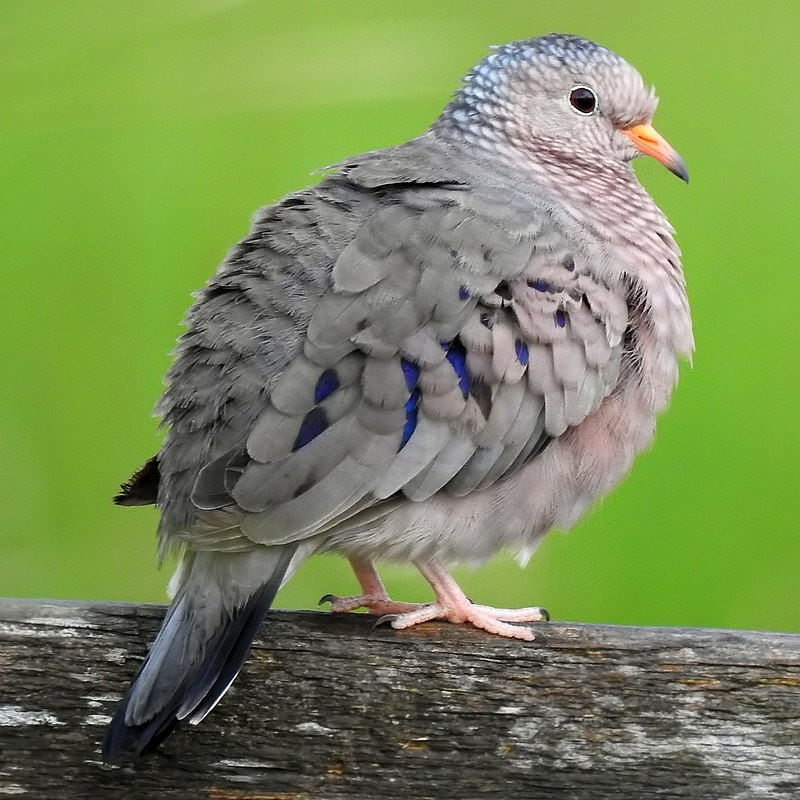
The Common Ground-Dove is a small bird found in the southern United States, Central America, the Caribbean, and northern South America.
It’s considered one of the smallest dove species in North America, with an average length of around 6–7 inches.
This ground-dwelling species spends most of its time on foot but has been known to fly when necessary or threatened.
The plumage is pale grayish brown above, while their bellies are white and speckled with black spots along their wings.
Its diet consists mainly of seeds from grasses and other low vegetation, which it forages for by walking slowly across open fields or lawns looking for food items like berries, grains, insects, spiders, and snails.
Scientific classification:
| Kingdom | Animalia |
| Phylum | Chordata |
| Class | Aves |
| Order | Columbiformes |
| Family | Columbidae |
| Genus | Columbina |
| Species | C. passerina |
Also Featured In: Barbados Birds, Birds You’ll Find in South Texas
18. Double-Crested Cormorant

The double-crested cormorant is a majestic bird with an impressive wingspan spanning North America from the Aleutian Islands to Mexico.
Its black plumage stands out against its bright orange-yellow facial skin and some extended patches of white feathers on each side of its throat.
It measures 28 – 35 inches in length and has webbed feet that enable it to swim gracefully through rivers, lakes, and coastal areas.
These birds are known for their voracious appetite for fish, sometimes diving over 100 ft deep into water looking for food.
Despite this reputation, they feed on crustaceans, amphibians, and insects when available.
Cormorants have been part of many cultures throughout history due to their remarkable ability to fly long distances, making them valued messengers or companions during fishing expeditions at sea.
Scientific classification:
| Kingdom | Animalia |
| Phylum | Chordata |
| Class | Aves |
| Order | Suliformes |
| Family | Phalacrocoracidae |
| Genus | Nannopterum |
| Species | N. auritum |
Also Featured In: Cormorant Species, Water Birds Live around Us
19. Columbidae
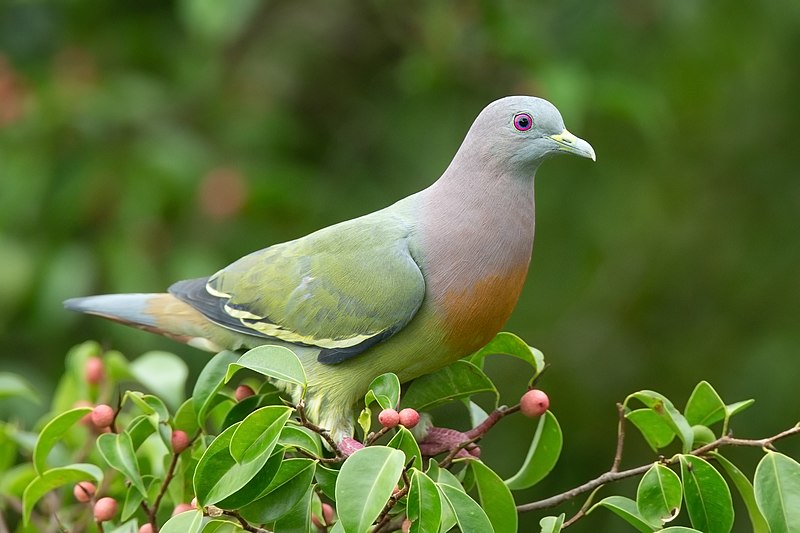
Columbidae is a bird family that includes both doves and pigeons. These birds are characterized by their stout bodies, short necks, and small, slender bills with fleshy ceres in some species.
They feed mainly on seeds, fruits, and plants found worldwide but have the greatest variety in the Indomalayan and Australasian regions.
Columbidae have an unmistakable soft cooing sound, making them one of the most beloved avian families worldwide – especially among city dwellers.
Whether it be feeding time or hearing their soothing call throughout nature walks, these birds will remain a favorite for many years.
Scientific classification:
| Kingdom | Animalia |
| Phylum | Chordata |
| Class | Aves |
| Clade | Columbimorphae |
| Order | Columbiformes Latham, 1790 |
| Family | Columbidae Leach, 1820 |
Also Featured In: birds of white, Birds for Your Home Garden
20. Sandpiper
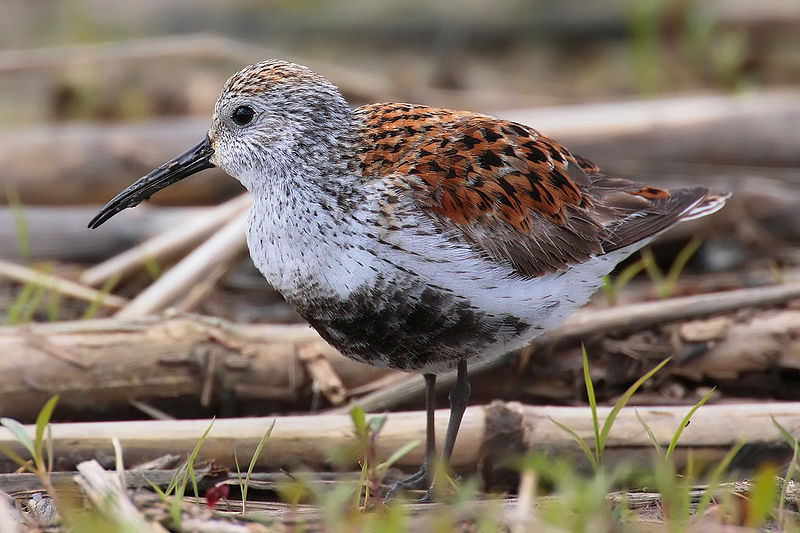
Sandpiper is a type of wading bird that belongs to the family Scolopacidae. It is a diverse family that includes various species, such as curlew and snipe.
Sandpipers have different bill lengths that allow them to feed on small invertebrates and creatures found in mud or soil.
Due to this diversity, different species can coexist in the same habitat without competing for food.
Sandpipers are commonly found near the coast and in other wetland environments.
They are known for their slender legs, long beak, and streamlined body that enables them to move easily in and out of water.
Sandpipers are a unique and fascinating bird species that are interesting to observe in their natural habitat.
Scientific classification:
| Kingdom | Animalia |
| Phylum | Chordata |
| Class | Aves |
| Order | Charadriiformes |
| Suborder | Scolopaci |
| Family | Scolopacidae Rafinesque, 1815 |
Also Featured In: Birds You’ll Find in the Sea, Turkey Birds You Should Know
21. Brown Pelican

The majestic brown pelican is a dive-feeding bird that belongs to the pelican family. It is one of the three pelican species in the Americas and is known to dive into water to catch its prey.
This bird can be found from the Atlantic Coast of New Jersey to the mouth of the Amazon River, along the Pacific Coast from British Columbia to northern Chile, including the Galapagos Islands.
Its scientific name is Pelecanus occidentalis, and it has a colored brown plumage, its distinct characteristic.
The brown pelican belongs to the largest bird species today, with a wingspan that can stretch up to seven feet long.
This bird helps maintain a balance in the ecosystem by eating smaller fish, crustaceans, and other aquatic prey.
Scientific classification:
| Kingdom | Animalia |
| Phylum | Chordata |
| Class | Aves |
| Order | Pelecaniformes |
| Family | Pelecanidae |
| Genus | Pelecanus |
| Species | P. occidentalis |
Also Featured In: Flight Birds You Should Know, Common Southern Californian Birds
22. Turnstone
Turnstones are two species of birds in the Scolopacidae family, closely related to calidrid sandpipers. They are sometimes considered members of the Calidriini tribe.
The genus Arenaria, which includes the ruddy turnstone, was introduced by French zoologist Mathurin Jacques Brisson in 1760.
“Arenaria” comes from the Latin word for “sandy place.” Turnstones are known for flipping over stones and other objects, such as insects and small crustaceans, to find food.
They are migratory and can be found in coastal areas worldwide, including rocky shores, tidal flats, and pebble beaches.
The two species of turnstones are the ruddy turnstone and the black turnstone, which are found primarily along the Pacific coast of North America.
Scientific classification:
| Kingdom | Animalia |
| Phylum | Chordata |
| Class | Aves |
| Order | Charadriiformes |
| Family | Scolopacidae |
| Subfamily | Arenarinae |
| Genus | Arenaria Brisson, 1760 |
Also Featured In: Common Cornwall Birds, Native Birds Of Middle Caicos
23. Pomarine Jaeger
The Pomarine jaeger is a migratory seabird that belongs to the skua family Stercorariidae. It spends winter at sea in tropical oceans.
Although its relationships are not entirely understood, its mitochondrial DNA is most similar to the great skua while its behavior and morphology relate more to lesser skuas, such as the parasitic jaeger.
This bird’s distinctive features include a black cap and a thick, hooked bill that it uses to snatch fish from other seabirds.
It has a white belly and dark grey-brown plumage on its upper parts, making it easily recognizable as it reaps through the ocean in search of prey.
The Pomarine Jaeger is a fascinating bird that plays an important role in maintaining the ocean’s ecological balance.
Scientific classification:
| Kingdom | Animalia |
| Phylum | Chordata |
| Class | Aves |
| Order | Charadriiformes |
| Family | Stercorariidae |
| Genus | Stercorarius |
| Species | S. pomarinus |
Also Featured In: Birds that Live in Svalbard, Birds That Live in Spitsbergen
24. Blue-Winged Teal
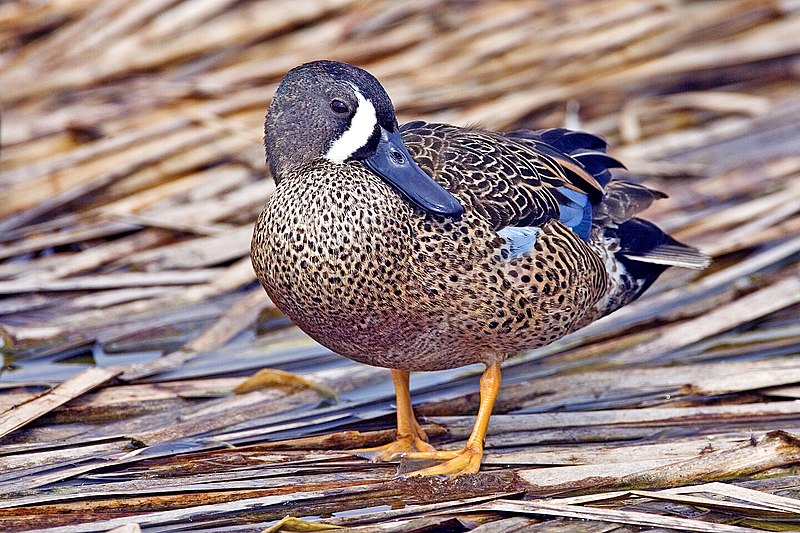
The Blue-winged teal is a North American bird and is a smaller species in the dabbling duck group. Its scientific name is Spatula discors. This bird breeds in various locations ranging from southern Alaska to Nova Scotia and northern Texas.
It spends its winters on both the Pacific and Atlantic coasts, as well as in Central America and the Caribbean islands.
The Blue-winged teal has striking blue wings and is part of the Anatidae family, which includes ducks, geese, and swans. This beautiful bird is a favorite among birdwatchers in North America.
Scientific classification:
| Kingdom | Animalia |
| Phylum | Chordata |
| Class | Aves |
| Order | Anseriformes |
| Family | Anatidae |
| Genus | Spatula |
| Species | S. discors |
Also Featured In: Common Birds of West Caicos,
Conclusion
South Caicos is home to diverse bird species, ranging from elegant herons and majestic frigatebirds to colorful flamingos and formidable birds of prey. Whether soaring over the coastline, perched in mangroves, or foraging in wetlands, these birds play integral roles in the island’s ecosystem.
Observing and appreciating the avian diversity of South Caicos adds to the richness of the island’s natural beauty and highlights the importance of conservation efforts to protect these precious habitats and their winged inhabitants.